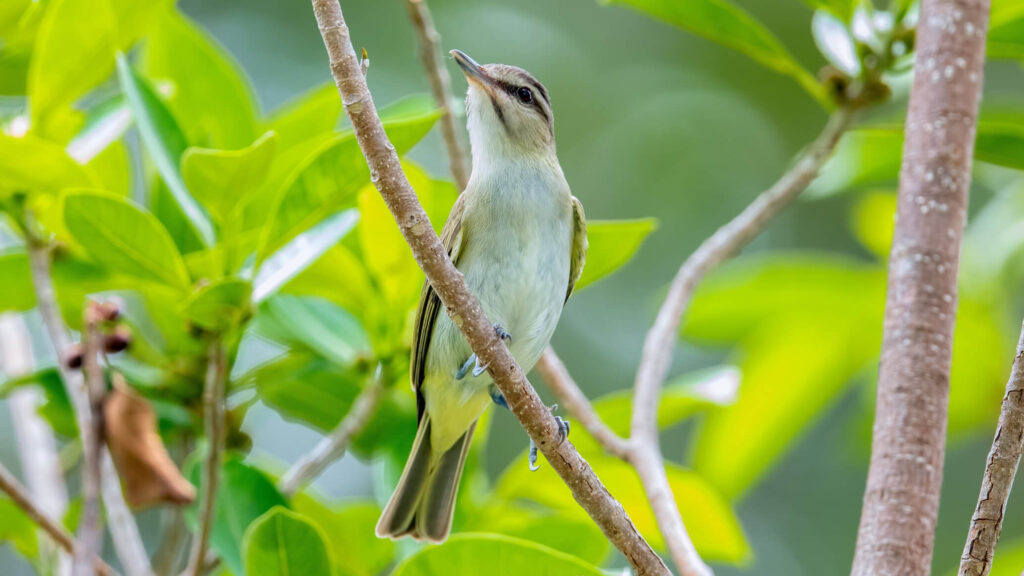FAQ
Sooty Tern © Robert Royse
ANSWERS TO your QUESTIONS
Planning a birding trip involves many factors and some unknowns. This guide to frequently asked questions will assist you in the process. If you need further clarification on any points or have questions not covered here, please don’t hesitate to ask us!
Where do I go?
Florida offers birders an array of enchanting regions to explore, each with its own unique species. In the south, the Everglades are home to Roseate Spoonbills, Snail Kite, and many species of wading birds, while Miami is the best place to search for Mangrove Cuckoo, Black-whiskered Vireo and the elusive American Flamingo, as well as established exotics like Yellow-chevroned Parakeet, Mitred Parakeet, and Red-Masked Parakeet. The Florida Keys and Dry Tortugas blend the thrill of migration with resident species such as Magnificent Frigatebird and White-crowned Pigeon. This is the most reliable location to see Black Noddy, Brown Noddy, Sooty Tern, Bridled Tern, Roseate Tern and many more. To the north, St. Marks NWR hosts Red-cockaded Woodpecker and King Rail while central Florida’s Merritt Island NWR is home to Florida Scrub-Jay and Reddish Egret along with many species of wintering waterfowl. Each region holds its own unique magic, making Florida a true birding haven.


When do I come?
Florida is a year-round birding destination, with each season offering unique opportunities to observe different species. Winter, from November to March, is ideal for spotting migratory birds such as waterfowl and shorebirds that escape the cold northern climates. Spring, from March to May, is prime for observing songbird migration and breeding behaviors, particularly in hotspots like Fort De Soto and the Dry Tortugas. Summer, from June to August, allows birders to see resident breeders, including the endangered Florida Scrub-Jay and the elusive Mangrove Cuckoo. Fall, from September to November, is marked by the southward migration of shorebirds, raptors, and warblers. Each season offers a distinct birdwatching experience, making Florida a versatile and rich destination for birders.
What will I see?
This depends on when you come, where you go, and your objectives. Florida Ornithological Society produces a useful up-to-date state checklist while eBird is without doubt the most dynamic tool. Use the downloadable lists to the right to determine which species you can expect to see or target during your visit. You can view species sorted by taxonomic order (evolutionary relationships) or sighting frequency (percentage of checklists that have reported the species). NOTE: frequency does not necessarily reflect the likelihood of seeing a given species.
TAXONOMIC Order
Sighting FREQUency
What do I bring?
Start with whatever you bring out birding on a regular basis – binoculars, spotting scope, camera, appropriate outerwear (including sunscreen, bug spray, and chapstick), daypack, and water/snacks. Check out our services page for a list of what we’ll bring along as well. Bring at least one layer each of clothes for warm, cold, and wet conditions. We recommend sticking with long pants, long sleeves, and closed-toed shoes when in the field.


What do I eat?
Food is handled per circumstances and preferences. Breakfast is quick, usually at your lodging, a quick restaurant, or packed ahead of time for the field. Similarly, lunch is often on-the-go, either packed or ordered at a quick restaurant along the way. Often folks choose to beat the heat and the mid-day lull by taking a break and eating lunch at a dine-in restaurant. Dinner is the best time to relax and enjoy some good food out. Louisiana is known for its food, so do yourself a favor and try some of it! Boudin is a must in Southwest Louisiana. If in New Orleans, you have to try beignets! Jambalayas, etouffees, and gumbos are also must-have staples. Yelp and Trip Advisor are excellent resources to locate Louisiana’s non-bird specialties!
What is the weather like?
Florida’s weather is characterized by a confluence of humid subtropical (north and central) and tropical (south) climates moderated by close proximity to the ocean. Though it is overall the warmest state in the US it rarely gets above 100 degrees. Likewise, freezing is a very uncommon event and winters are famously mild, especially in the south. Severe weather is Florida’s other claim to fame, with more lightning and rain than most places in the country, and, of course, hurricanes are a common occurrence from June to December. It is always best to check conditions where you will be before you go. Accuweather and Weather Underground are the best resources.


